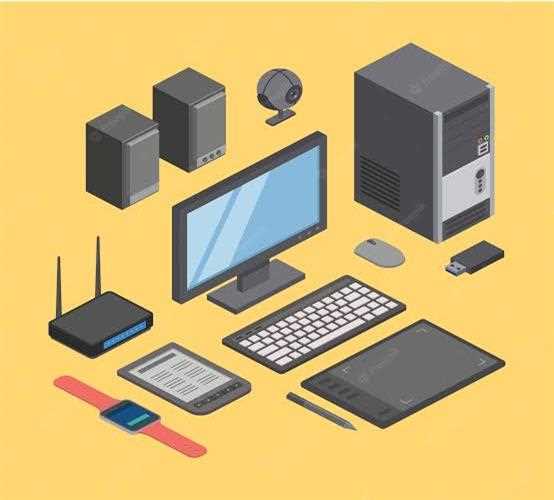Hardware pertains to the tangible constituents and devices that constitute a computer system. It encompasses all the tangible elements that you can touch and see, which work together to enable the execution of various computing tasks. Hardware can be categorized into different types based on their functions, such as input devices, output devices, storage devices, processing units, and networking devices.

Input devices are used to provide information and commands to the computer. Examples include keyboards, mice, scanners, and microphones. These devices allow users to interact with the computer and input data or instructions.
Output devices display or present the processed information from the computer to the user. Common output devices include monitors, printers, speakers, and projectors. They provide users with visual, auditory, or tangible feedback based on the output generated by the computer system.
Storage devices are employed for the purpose of storing and retrieving data. They can be classified into two main categories: primary storage and secondary storage. Primary storage devices, such as RAM (Random Access Memory), provide temporary storage for data that is actively being processed by the computer. Secondary storage devices, such as hard disk drives (HDDs) and solid-state drives (SSDs), offer long-term storage for files and programs even when the computer is powered off.
The processing unit, also known as the central processing unit (CPU), is the brain of the computer. It carries out instructions and performs calculations to process data. The CPU consists of several components, including the arithmetic logic unit (ALU) and the control unit. The ALU performs arithmetic and logical operations, while the control unit coordinates and manages the execution of instructions.
Networking devices enable communication and data transfer between computers and other devices. They include routers, switches, modems, and network interface cards. These devices facilitate the establishment of networks, both local area networks (LANs) and wide area networks (WANs), allowing computers to connect and exchange information.
In addition to these main categories, there are also other hardware components that support the functioning of a computer system. These include motherboards, which serve as the main circuit board that connects and allows communication between various hardware components. Power supply units provide the necessary electrical power to the computer system. Graphics processing units (GPUs) specialize in rendering and displaying visual content, making them particularly useful for gaming and graphic-intensive applications.
Hardware plays a fundamental role in the operation and functionality of computers. Software, which consists of programs and instructions, relies on hardware to execute tasks. The performance and capabilities of a computer system are influenced by the quality and specifications of its hardware components. Advancements in hardware technology, such as faster processors, larger storage capacities, and improved networking capabilities, have been instrumental in driving the evolution of computers and enabling more complex and resource-intensive applications.
In conclusion, hardware encompasses the physical components and devices that comprise a computer system. It includes input and output devices, storage devices, processing units, and networking devices. Hardware is essential for the execution of tasks and the functioning of software. The continuous advancements in hardware technology have significantly contributed to the development and enhancement of computers over time.